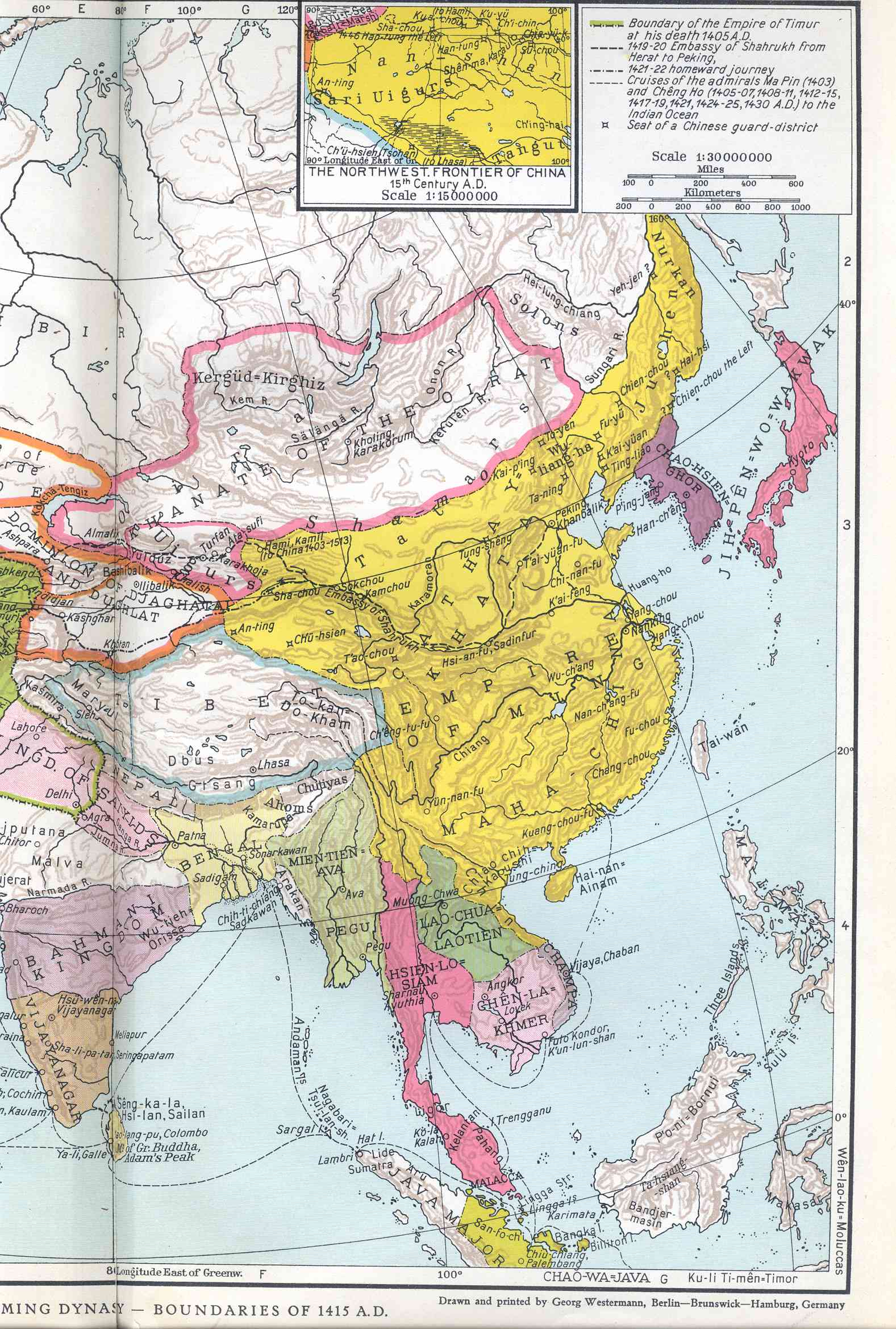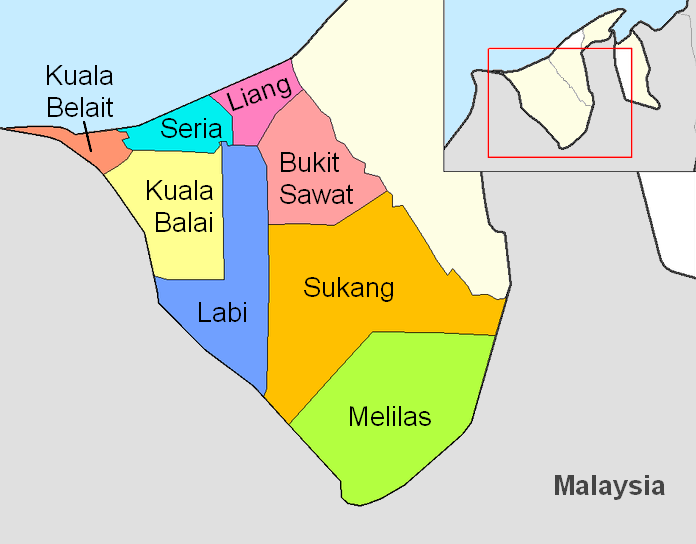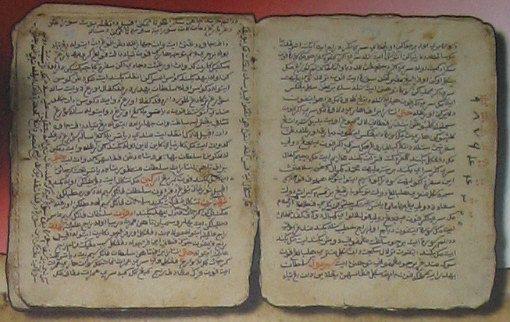|
Besut District
Besut ( Terengganuan and Kelantanese: ''Besuk'') is a Terengganu Malay and Kelantan Malay district in the Terengganu federal state of Malaysia. It is bordered by the state of Kelantan to the north and west and the South China Sea to the east. It is the northern gateway to Terengganu. Kampung Raja is the district capital, though Jerteh is more developed. Another major town is the fishing port of Kuala Besut. There are other small towns and villages such as Jabi, Apal, Pasir Akar and Tembila. History There is a lack of written evidence on this district. The records by Munshi Abdullah in his book, ''Kisah Pelayaran Abdullah ke Kelantan'', and ''Tuhfat al-Nafis'' by Raja Ali Haji touched a bit on Besut. Due to this, there are many stories that tell the matters regarding the origin of Besut. There is a legend that recounts the tale of how Besut got its name. According to this story, when the region was under Siamese rule, the district was named "Besut" which originated from the Si ... [...More Info...] [...Related Items...] OR: [Wikipedia] [Google] [Baidu] |
Kelantan–Pattani Malay
Kelantan–Pattani Malay (; ; in Pattani; in Kelantan) is an Austronesian languages, Austronesian language of the Malayic languages, Malayic subfamily spoken in the Malaysian state of Kelantan, as well as in Besut and Setiu districts of Terengganu state and the Perhentian Islands, and in the southernmost provinces of Thailand. It is the primary spoken language of Thai Malays and used as a lingua franca by ethnic Southern Thais in rural areas, Muslim and non-Muslim and the Sam-Sam, a mostly Thai-speaking population of mixed Malay and Thai ancestry. Kelantan–Pattani Malay is highly divergent from other Malay varieties because of its geographical isolation from the rest of the Malay world by high mountains, deep rainforests and the Gulf of Thailand. It is also influenced by Thai language, Thai in Thailand. Kelantanese–Pattani Malay is distinct enough that radio broadcasts in Malaysian language, Standard Malay cannot be understood easily by native speakers of Kelantan–Pattani ... [...More Info...] [...Related Items...] OR: [Wikipedia] [Google] [Baidu] |
Jerteh
Jerteh ( Jawi: جرتيه) also spell as Jertih is the most populous town in Besut District, Terengganu, Malaysia. It has been represented by Che Mohamad Zulkifly Jusoh since 2022 in Dewan Rakyat The Dewan Rakyat (; Jawi script, Jawi: ), is the lower house of the Bicameralism, bicameral Parliament of Malaysia, Parliament which is the federal legislature of Malaysia. The chamber and its powers are established by Article 44 of the Constitu ... (Malaysian House of Representatives). Jertih contains Hospital Besut, the largest hospital in Besut District. See also * Felda Selasih References Besut District Towns in Terengganu {{Terengganu-geo-stub ... [...More Info...] [...Related Items...] OR: [Wikipedia] [Google] [Baidu] |
Malaysian Siamese
The Malaysian Siamese (Malay language, Malay: ''Orang Siam Malaysia'') are an ethnicity or community who principally resides in Peninsular Malaysia which is a relatively homogeneous cultural region to southern Burma and southern Thailand but was separated by the Anglo-Siamese Treaty of 1909 between the United Kingdom of Great Britain and Ireland, United Kingdom and the Rattanakosin Kingdom (1782–1932), Kingdom of Siam. The treaty established the modern Malaysia–Thailand border, Malaysia-Thailand Border which starts from Golok River in Kelantan and ends at Padang Besar, Malaysia, Padang Besar in Perlis. Before this, there was a mass migration of Siamese from Nakhon Si Thammarat Kingdom, Nakhon Si Thammarat to the northern Malay states seeking refuge following a Taksin's reunification of Siam#Pursuit of Chaophraya Nakhon Nu, civil war waged by Taksin of Thonburi Kingdom, Thonburi against Nakhon ruler Chaophraya Nakhon (Nu), Nu in 1769. Demographics In 2000, the national stat ... [...More Info...] [...Related Items...] OR: [Wikipedia] [Google] [Baidu] |
Malaysian Chinese
Malaysian Chinese, Chinese Malaysians, or Sino-Malaysians are Malaysians, Malaysian citizens of Chinese people, Chinese ethnicity. They form the second-largest ethnic group in Malaysia, after the Malaysian Malays, Malay majority, and , constituted 23.2% of the country's citizens. In addition, Malaysian Chinese make up the second-largest community of overseas Chinese globally, after Thai Chinese. Within Malaysia, the ethnic Chinese community maintains a significant and substantial presence in the Economy of Malaysia, country's economy. Most Malaysian Chinese are descendants of Southern China, Southern Chinese immigrants who arrived in Malaysia between the early 19th and the mid-20th centuries before the country attained independence from British colonial rule. The majority originate from the provinces of Fujian and Lingnan (including the three modern provinces of Guangdong, Hainan and Guangxi). They belong to diverse linguistic subgroups speaking Chinese such as the Hoklo peop ... [...More Info...] [...Related Items...] OR: [Wikipedia] [Google] [Baidu] |
Perhentian Islands
The Perhentian Islands ( Malay: ''Kepulauan Perhentian''; Terengganu Malay: ''Perhentiang''; Kelantan-Pattani Malay: ''Perhentiey'') are a group of islands off the coast of Besut District, Terengganu, Malaysia. The two main islands are Perhentian Besar ("Greater Perhentian") and Perhentian Kecil ("Lesser Perhentian"). The small, uninhabited islands of Susu Dara (''Virgin Milk''), Serengeh and Rawa, lie off Kecil. As in the rest of Besut, people generally speak Kelantanese Malay. However, English is also widely spoken. History The name "Perhentian" means "stopping point" in Malay, referring to the islands' traditional role as a waypoint for traders between Bangkok and Malaysia. The islands were sparsely inhabited by fishers for centuries, although tourism now accounts for most of the economic activity. The Perhentian Islands appear on many maps from the nineteenth and twentieth century as 'The Station Islands'. This arises from the British colonial period, as an English tran ... [...More Info...] [...Related Items...] OR: [Wikipedia] [Google] [Baidu] |
Mukim
A mukim is a type of administrative division used in Brunei, Indonesia, Malaysia and Singapore. The word ''mukim'' is a loanword in English language, English. However, it was also originally a loanword in Malay language, Malay from the Arabic word: (meaning ''resident''). The closest English translation for mukim is township. Usage Brunei In Brunei, a mukim is the immediate Country subdivision, subdivision of a district (). The equivalent English word for 'mukim' is 'township'. There are 38 Mukims of Brunei, mukims in Brunei. Each mukim is an administrative area made up of several (Malay language, Malay for "village"). A mukim is headed by a (Malay for "headman"), which is an elected office. The number of mukims in each of the districts in Brunei is as follows: The smallest mukim by area is Mukim Saba in the Brunei and Muara, Brunei-Muara District. The largest mukim by area is Mukim Sukang in the Belait District. The last change in the mukim boundaries was in the late ... [...More Info...] [...Related Items...] OR: [Wikipedia] [Google] [Baidu] |
Map Of Besut District, Terengganu
A map is a symbolic depiction of interrelationships, commonly spatial, between things within a space. A map may be annotated with text and graphics. Like any graphic, a map may be fixed to paper or other durable media, or may be displayed on a transitory medium such as a computer screen. Some maps change interactively. Although maps are commonly used to depict geographic elements, they may represent any space, real or fictional. The subject being mapped may be two-dimensional such as Earth's surface, three-dimensional such as Earth's interior, or from an abstract space of any dimension. Maps of geographic territory have a very long tradition and have existed from ancient times. The word "map" comes from the , wherein ''mappa'' meant 'napkin' or 'cloth' and ''mundi'' 'of the world'. Thus, "map" became a shortened term referring to a flat representation of Earth's surface. History Maps have been one of the most important human inventions for millennia, allowing humans t ... [...More Info...] [...Related Items...] OR: [Wikipedia] [Google] [Baidu] |
Johor Sultanate
The Johor Sultanate ( or ; also called the Sultanate of Johor, Johor-Pahang-Riau-Lingga, or the Johor Empire) was founded by Sultan of Malacca Mahmud Shah of Malacca, Mahmud Shah's son, Alauddin Riayat Shah II of Johor, Alauddin Riayat Shah II in 1528. Prior to being a sultanate of its own right, Johor had been part of the Malacca Sultanate, Malaccan Sultanate before the Portuguese Empire, Portuguese Capture of Malacca (1511), captured its capital in 1511. At its height, the sultanate controlled territory in what is now modern-day Johor, Pahang, Terengganu, territories stretching from the rivers of Klang River, Klang to the Linggi River, Linggi and Tanjung Tuan, situated respectively in Selangor, Negeri Sembilan and Malacca (as an exclave), Singapore, Pulau Tinggi and other islands off the east coast of the Malay Peninsula, the Karimun Regency, Karimun Islands, the islands of Bintan, Bulang, Lingga Islands, Lingga and Bunguran Islands, Bunguran, and Bengkalis, Kampar Regency ... [...More Info...] [...Related Items...] OR: [Wikipedia] [Google] [Baidu] |
Raja Kuning
Raja Kuning or Ratu Kuning was the sovereign queen of Patani in the 17th century. Her name means "the Yellow Queen" in English. She succeeded her mother, Queen Raja Ungu. She was the last of four female rulers to have ruled in succession in the Patani Kingdom since 1584. She is the last queen regnant who is acknowledged as legitimate in the Patani chronicles. As Patani became less internationally attractive for traders in the late 17th century, sources about Patani history are scarce in that period. There is dispute over when her rule ended, and who succeeded her. Early life Raja Kuning was the daughter of Raja Ungu and the Sultan of Pahang. After the Sultan of Pahang died, she returned to Patani with her mother. She was said to be named Kuning (meaning "Yellow") because she had whitish-yellow skin. At the age of 12, she married Okphaya Déca, King of Bordelong Phatthalung, for an alliance between Patani kingdom and Ayutthaya kingdom. After Patani had break off relations with A ... [...More Info...] [...Related Items...] OR: [Wikipedia] [Google] [Baidu] |
Patani Kingdom
Patani, or the Sultanate of Patani ( Jawi: كسلطانن ڤطاني) was a Malay sultanate in the historical Pattani Region. It covered approximately the area of the modern Thai provinces of Pattani, Yala, Narathiwat and part of the Malaysian state of Kelantan. The 2nd–15th century state of Langkasuka and the 6th–7th century state of Pan Pan may have been related. The golden age of Patani started during the reign of the first of its four successive queens, Raja Hijau (The Green Queen), who came to the throne in 1584 and was followed by Raja Biru (The Blue Queen), Raja Ungu (The Purple Queen) and Raja Kuning (The Yellow Queen). During this period the kingdom's economic and military strength was greatly increased to the point that it was able to fight off four major Siamese invasions. It had declined by the late 17th century and it was invaded by Siam in 1786, which eventually absorbed the state after its last raja was deposed in 1902. Predecessors An early kin ... [...More Info...] [...Related Items...] OR: [Wikipedia] [Google] [Baidu] |
Map Of Malay Peninsula 1530-1730
A map is a symbolic depiction of interrelationships, commonly spatial, between things within a space. A map may be annotated with text and graphics. Like any graphic, a map may be fixed to paper or other durable media, or may be displayed on a transitory medium such as a computer screen. Some maps change interactively. Although maps are commonly used to depict geographic elements, they may represent any space, real or fictional. The subject being mapped may be two-dimensional such as Earth's surface, three-dimensional such as Earth's interior, or from an abstract space of any dimension. Maps of geographic territory have a very long tradition and have existed from ancient times. The word "map" comes from the , wherein ''mappa'' meant 'napkin' or 'cloth' and ''mundi'' 'of the world'. Thus, "map" became a shortened term referring to a flat representation of Earth's surface. History Maps have been one of the most important human inventions for millennia, allowing humans t ... [...More Info...] [...Related Items...] OR: [Wikipedia] [Google] [Baidu] |




